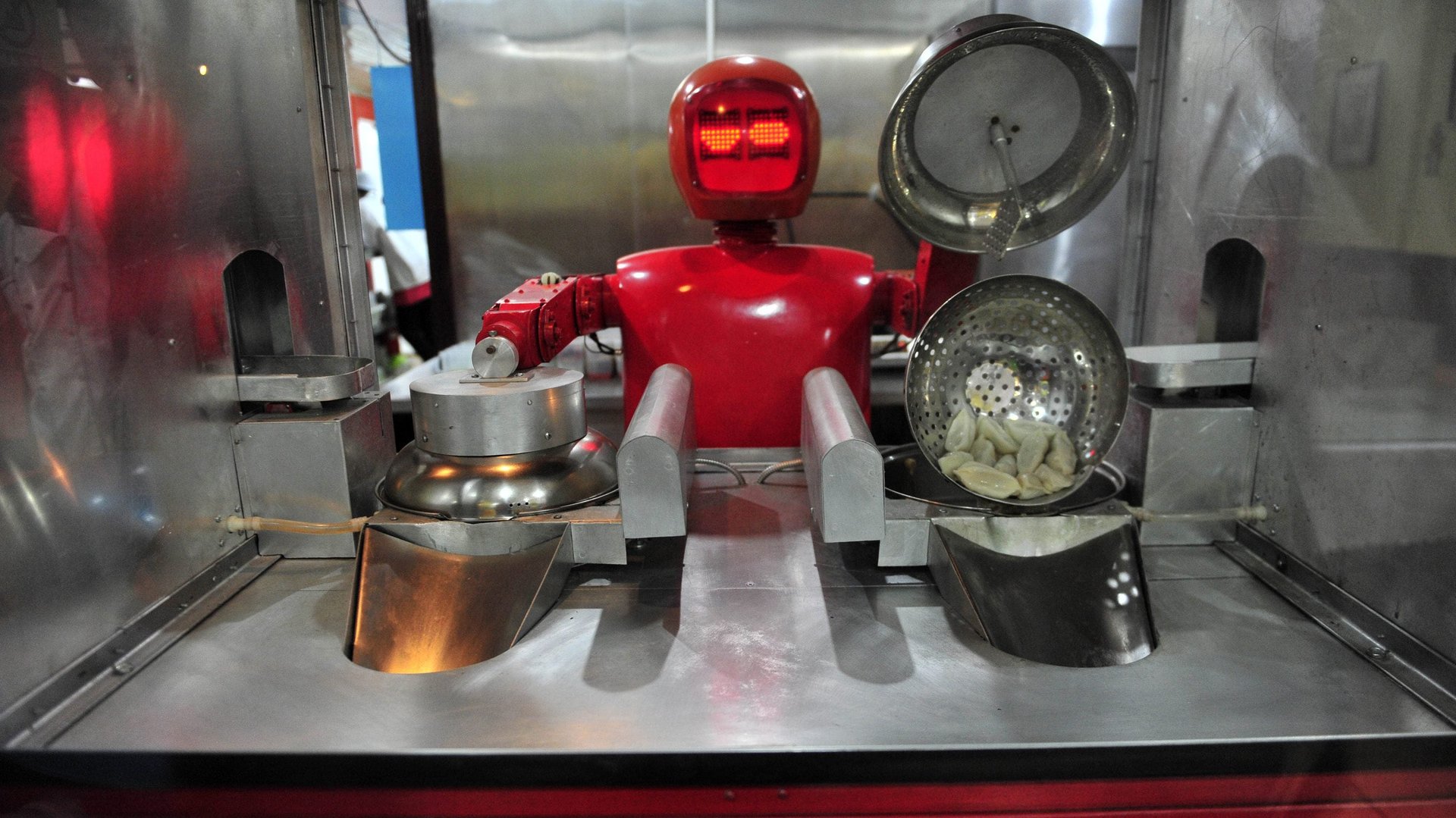Automating jobs is how society makes progress
Analysts discuss the automation of jobs as if robots are rising from the sea like Godzilla, rampaging through the Tokyo of stable employment, and leaving only chaos in their wake.


Analysts discuss the automation of jobs as if robots are rising from the sea like Godzilla, rampaging through the Tokyo of stable employment, and leaving only chaos in their wake.
According to data from PWC, 38% of jobs in the U.S. could become automated by the early 2030s. Meanwhile, a report from Ball State University’s Center for Business and Economic Research warned that half of all American jobs could be replaced by automation.
These prophecies of doom fail to recognize that automation and increased productivity are nothing new. From the cotton gin to the computer, automation has been happening for centuries.
Consider the way automation has improved the mining industry over the past 100 years. Without machines, humans were forced to crawl into unstable passageways and chip away at rocks with primitive tools while avoiding the ever-present dangers of gas poisoning and cave-ins. Not only was this approach terrible for health, but it was also a highly inefficient use of skilled human laborers. With machines doing the heavy lifting, society was able to dedicate resources to building, servicing, and running the machinery.
Fewer people now do the traditional physical labor, but this advancement is celebrated rather than mourned. By letting machines handle the more tedious—and, in some cases, dangerous—tasks, people were liberated to use their labor in more efficient, effective, and fulfilling ways.
Critics of automation miss the point. Nobody works for the sake of work—people strive to create value, which helps pay our salaries and feed our families. Automation effectively opens the door for more new endeavors that will elevate our species to greater heights. Just as past generations turned away the mines for better careers, modern workers whose jobs are altered by automation will see their roles in society evolve rather than disappear.
Growing Pains
During any period of transition, people lose their jobs and struggle to find new ones. Perhaps they refuse to learn new skills, don’t want to move to a new area, or lack the skills necessary to thrive in the new environment. From a high-level perspective, these problems—while significant to those affected —are only temporary.
As automation has changed the world time and time again, society has continued to find uses for newly available labor. The invention of the wheel likely put a few cargo-carrying men and horses out of work, but those workers eventually drove wagons overflowing with goods to cities that thrived because of improved supply chains. Someone in the 18th century would never have believed that only 2% of the U.S. population lives on a farm or ranch, but that’s the reality of 2017. Not only is the remaining 98% of the population not starving, but it’s thriving—leading happier lives, working more comfortable jobs, and struggling with obesity in some cases.
People voiced the same concerns about the steam engine that they share about computers and artificial intelligence today: “This is different! We’ve managed transitions before, but it’s never been quite like this.”
But the only thing unique about the modern automation surge is our use of software to accomplish the shift. In the past, only hardware freed us from menial tasks. Suddenly, software is able to boost hardware and produce exponentially greater results. This new component adds nothing fundamentally different to the equation—all the advancements are created by humans and will serve the needs of humans.
The Most Valuable Resource
Human ingenuity is always in short supply and high demand. Combined with the fact that mankind’s wants are insatiable, it’s always easy to imagine some way our lives could be better. As long as that vision remains, laborers are necessary to drive things forward.
Entrepreneurs cannot innovate in a vacuum. They need resources (including a team of other humans) to create new things. Whether it’s a software shop or a restaurant, every new endeavor requires a facility, inputs, and employees. If those employees are busy working other professions, new ventures cannot get off the ground.
That most valuable resource, human ingenuity (labor) must be distributed optimally toward the causes that provide the best return on investment. As automation increases productivity, the common standard of living rises—and with it, the opportunities of laborers to take on more productive roles. Companies flourish when leaders are able to step away from day-to-day operations to take a big-picture view, and laborers produce more value when they can use their skills in more efficient ways. If everyone had been exhausted from working in the fields, nobody would have had the time necessary to invent the tractor.
As is the nature of revolutionary change, it’s nearly impossible to predict the jobs that new technology will create. People will lose their jobs as automation makes some positions redundant, but those same people will then be available to help create the jobs of the future. Horse-and-carriage operators watching the steam engine power by might have thought they were destined for the poorhouse, but they could never have imagined that they would become railroad conductors, station engineers, and route planners. The needs of the future only become apparent once a change is complete, but they seem obvious once we are there.
Entrepreneurs will always be eager to start new businesses. Whether they have the human capital necessary to pursue those dreams actually relies on automation to liberate workers from dead-end positions. While the transition won’t be quick, comfortable, or easy for workers, the results will be beneficial beyond our imaginations.
Per Bylund is Assistant Professor of Entrepreneurship and Records-Johnston Professor of Free Enterprise in the School of Entrepreneurship at Oklahoma State University.